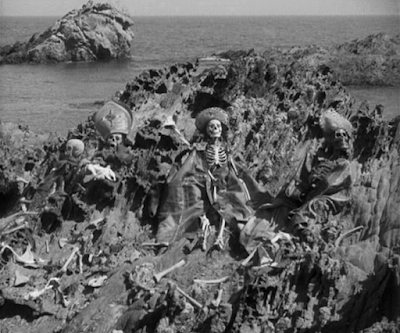Director: Steven Spielberg
Writers: Lawrence Kasdan, George Lucas, Philip Kaufman
Photography: Douglas Slocombe
Music: John Williams
Editors: Michael Kahn, George Lucas
Cast: Harrison Ford, Karen Allen, Ronald Lacey, Paul Freeman, John Rhys-Davies, Denholm Elliott, Wolf Kahler, Anthony Higgins, Alfred Molina
As an inevitable fact of life, I've seen Raiders of the Lost Ark a few times (among other things, it's one everybody can watch at get-togethers) and have been toting around a VHS I don't remember acquiring. I have always resisted it a little and the nostalgic 1940s Saturday afternoon serial aesthetic it sports. The element is under willing influence of cowriter George Lucas, who in approximately 1981 could do no wrong. But ultimately Raiders has always struck me as too much about not enough. It's slapstick, it's swashbuckling, it has something for everyone. It's never dull so it is always dull.
I avoided it until it was two years old, at which point I learned a lesson I have had to learn again since, which is that director Steven Spielberg's movies should not be underestimated. They are so expertly made, tuned so uncannily to the audience, that I usually end up sucked into them even somewhat against my will. I ditched the VHS experience this time, opted to pay the $4 to stream it, and found myself greeted by one of the longest and most detailed disclaimer statements I think I've ever seen (and I look at horror movies on the semiregular): "Rated 16+: alcohol use, foul language, frightening scenes, sexual content, smoking, violence." I want to talk about at least a couple of these things—the drinking by Karen Allen's character Marion is insane—but let's start with the frightening scenes.
As an inevitable fact of life, I've seen Raiders of the Lost Ark a few times (among other things, it's one everybody can watch at get-togethers) and have been toting around a VHS I don't remember acquiring. I have always resisted it a little and the nostalgic 1940s Saturday afternoon serial aesthetic it sports. The element is under willing influence of cowriter George Lucas, who in approximately 1981 could do no wrong. But ultimately Raiders has always struck me as too much about not enough. It's slapstick, it's swashbuckling, it has something for everyone. It's never dull so it is always dull.
I avoided it until it was two years old, at which point I learned a lesson I have had to learn again since, which is that director Steven Spielberg's movies should not be underestimated. They are so expertly made, tuned so uncannily to the audience, that I usually end up sucked into them even somewhat against my will. I ditched the VHS experience this time, opted to pay the $4 to stream it, and found myself greeted by one of the longest and most detailed disclaimer statements I think I've ever seen (and I look at horror movies on the semiregular): "Rated 16+: alcohol use, foul language, frightening scenes, sexual content, smoking, violence." I want to talk about at least a couple of these things—the drinking by Karen Allen's character Marion is insane—but let's start with the frightening scenes.
































